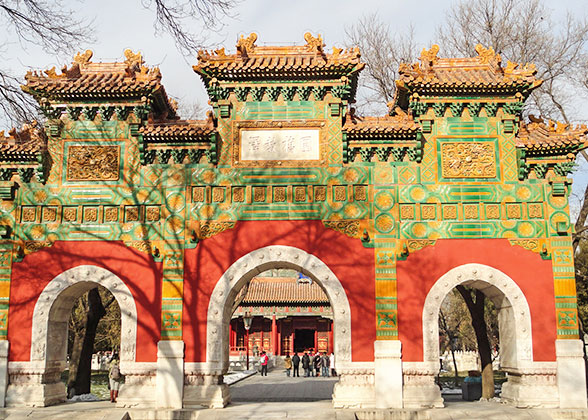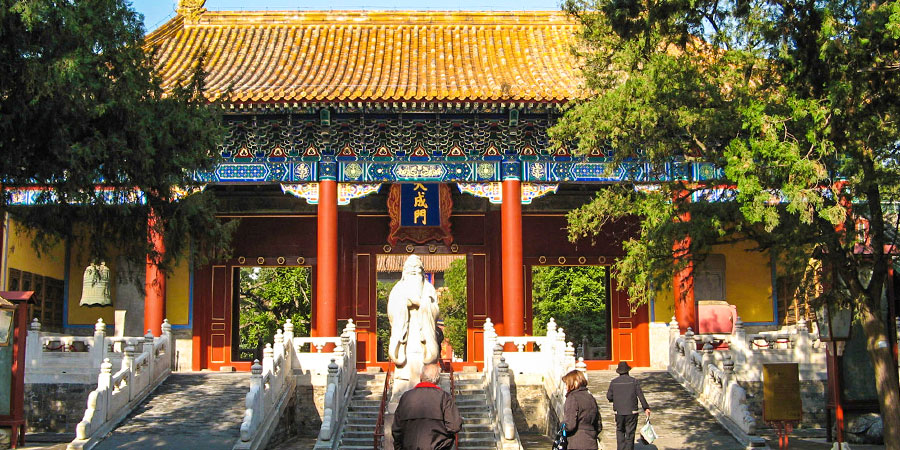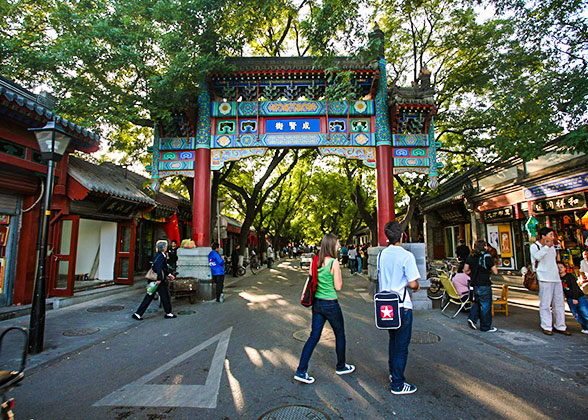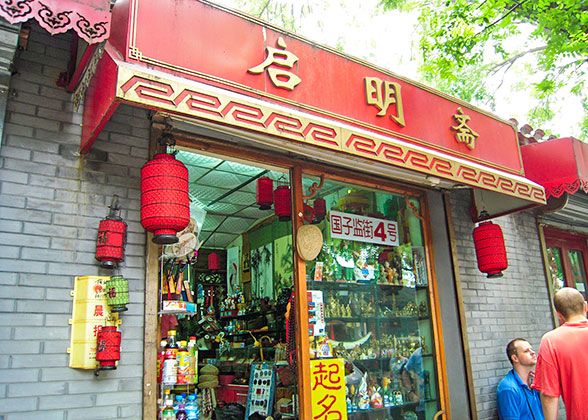Guozijian Street
Known as Chengxian Street during the Qing Dynasty (1644 – 1911 AD) it was changed to Guozijian Street in 1965 but continues to retain the old alley’s features. On both sides of the street, most of the structures are low and neat courtyards with grey walls and tiles. The gates that are painted red together with black bricks, bird cages hanging in the trees and the courtyards, are typical of old Beijing. Locust trees grow along the roadside shading the street. Most of the residents are native to the city. By observing their lifestyle, visitors can see just what it is like to reside in the hutongs.
|
|
 |
| Glazed Archway of Guozijian |
In the green shade, stand four arches. Two of these, one at the western end and the other at the eastern end of the street, bear plaques carved and colored with the Chinese characters Cheng Xi'an Jie. The two other arches are set on either side of the Guozijian’s gate with the three Chinese characters Guo Zi Jian on them. The arches are like barriers. On the outside, there are busy streets with the modern hubbub of noisy traffic and people. However, once you step through the arches, the noise seems to be cut off and all becomes quiet and pleasant.
Some cultural relics remain on Guozijian Street. The most symbolic structures are the Guozijian and the Temple of Confucius. The former is the only remaining state-run college from China’s distant past. Established in 1306, it was the supreme administrative headquarters of education and the highest seat of learning during the Yuan, Ming and Qing Dynasties (1271 – 1911 AD). The Temple of Confucius is to the west of the Guozijian with the Chijing Gate joining the two establishments. People attend the temple to pay homage to Confucius, the great educationalist, ideologist and founder of Confucianism and private schools in China.
 |
| Temple of Confucius |
On each side of the academy, you will see two white marbles. These are the Dismount Stones, carved with eight Chinese characters that tell officials to dismount their horses and show respect for Confucius. Behind the Guozijian, there is the Han Wengong Temple in memory of Han Yu, the master of prose during the Tang Dynasty (618 – 907 AD). In the west of Guozijian Street, there used to be two temples built on the south side of the street, the Fire God Temple and the Kitchen God Temple. The Kitchen God Temple has been demolished. There is a private museum at No. 3 of Guozijian Street exhibiting the gate piers, the ancient statues, the old architectural decorations and various carvings in wood and stone.
Walking in the shade of the locust trees, with the antique arches and courtyards by your side, you can experience a getaway from the noisy city life.
How to get to Guozijian Street
Take Subway Line 2 or Line 5, get off at Yonghe Temple (Yonghe Gong) Station. Get out from Exit D and walk south.
By bus
1. Take bus 13 or 684, to Guozijian Station.
2. Take bus 13, 116, 117 or 684, and then get off at Yonghe Temple (Yonghe Gong) Station.
3. Take bus 104, 108, 113, 124, or Te 11 to Andingmen Inner Station.
Beijing Bus / Subway Search

